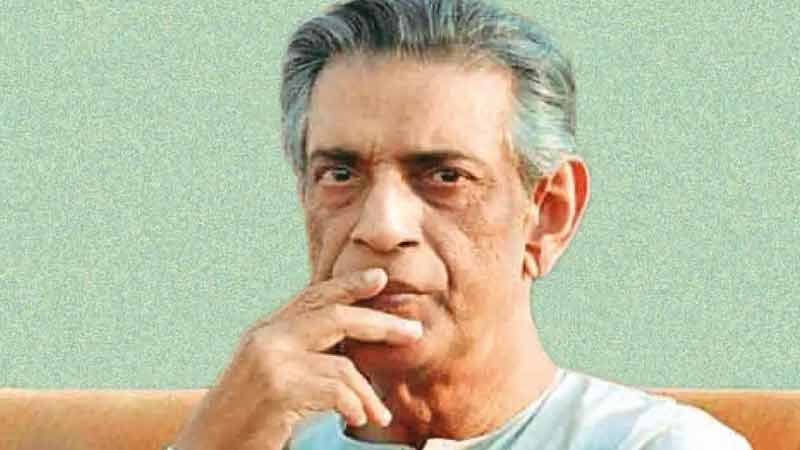For any Bong, especially if you have grown up in India’s Kolkata, all conversations about Satyajit Ray are bound to be steeped in nostalgia.
For us, Ray is like a family member – maybe the favourite uncle who is part of your childhood, teens and adult life, in whom you discover new facets at every stage of your life.
As a child while watching Apur Sansar I would think of myself as Kajal, Apu’s young son, but now I am Apu, the grieving bereaved Apu.
Just as when Apu revisits the room where he had spent the first night with his beloved, and now departed, wife Aparna. Now,
10 years later, he meets his son Kajal, who in his mind he blames for the death of Aparna, in the same room lying on the same bed. Apu is a different man and so are his realities.
Similarly, though the settings remain the same, as your context as an audience changes with time, Ray’s movies reveal themselves differently. In fact, while doing my masters in film and television production at the University of Bristol, I rediscovered Charulata (1964) on the editing table. In the first 11 minutes of the film, real time coincides with the reel time and it is a lesson in continuity.
Life on Film
Ray followed the Hollywood style of filmmaking but he never made the moralistic judgments that were an intrinsic part of Hollywood films. Hollywood always aims for moralistic victories for the good guys. At the end, all problems are solved. But Ray, while making movies in the 1950s, chose to break from this trope. While he ensured that the audience got catharsis, he kept the endings of his movies as ambiguous as life. Life doesn’t have a culmination as such. Good guys don’t win, bad guys don’t lose, good does not necessarily remain good and vice versa.
Apur Sansar ends with Apu leaving with Kajal. But Ray gives no hint at where they are going, what the father and son will now do or how their relationship will evolve. They just walk and the frame freezes.
As a child while watching Apur Sansar, I would think of myself as Kajal, Apu’s son. But now I am Apu, the grieving bereaved Apu.
To me, one of his greatest achievements as a filmmaker was his layering. On first viewing, his works might come across as a fine piece of drama or a fine thriller, but scratching the surface reveals something more poignant. He could deliver a succinct message through his movies without being preachy, or force-feeding the audience his perspective. Making the audience realise, believe and even fall in love with your philosophy, perspective and standpoint is not easy, but Ray not only achieved that but he did it while making the audience flock to the theatre. Coming from an advertising background, he knew very well how to cater to the audience.
Two Directions
This was probably the basic difference between the works of Ray and Ritwik Ghatak. Ray was more Apollonian, his works are more refined, objective and consistent, they are nuanced craft. Ghatak is the classic Dionysian and his works often oscillate between extremes – while some of his works can be difficult to watch, even unwatchable, some are exquisite and beautiful beyond words.
In his movies, Ghatak jumps into the middle of the action and wants to be a part of it; he wants to be as bothered by the goings-on as his characters. But Ray wants to record it objectively and present it to the audience. In Ray’s movies, you don’t see outbursts of emotions, which are very common in Ghatak’s films. For instance, in Charulata, when Amol is leaving and Charu is requesting him to stay, Charu rests her head on his chest once, and that’s the farthest Ray goes in portraying the sexual and physical tension between Charulata and her brother-in-law.
Now, if this was Ghatak, it would have been shot as if the world was falling apart, and that is how different the two were. Also, Ray always refrained from taking a judgement call and left it to the audience to decide, unlike Ghatak who took a clear and powerful moral and political stand in his movies. Ray was deeply humanist, but not radically left. He had a very objective view that tipped towards egalitarianism. I think, as a filmmaker, being Ray was more difficult than being Ghatak.

